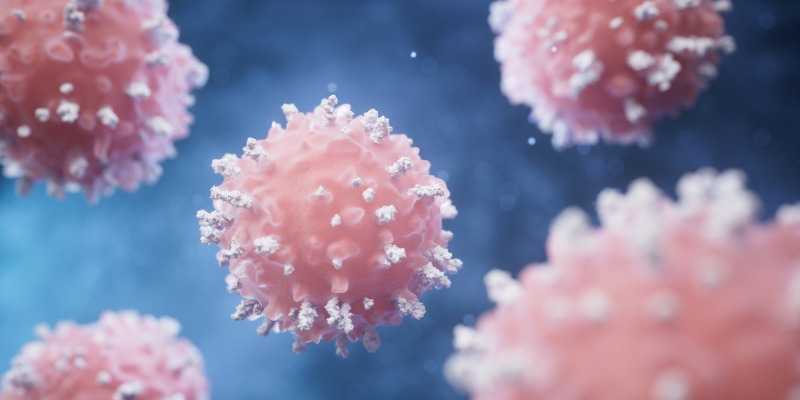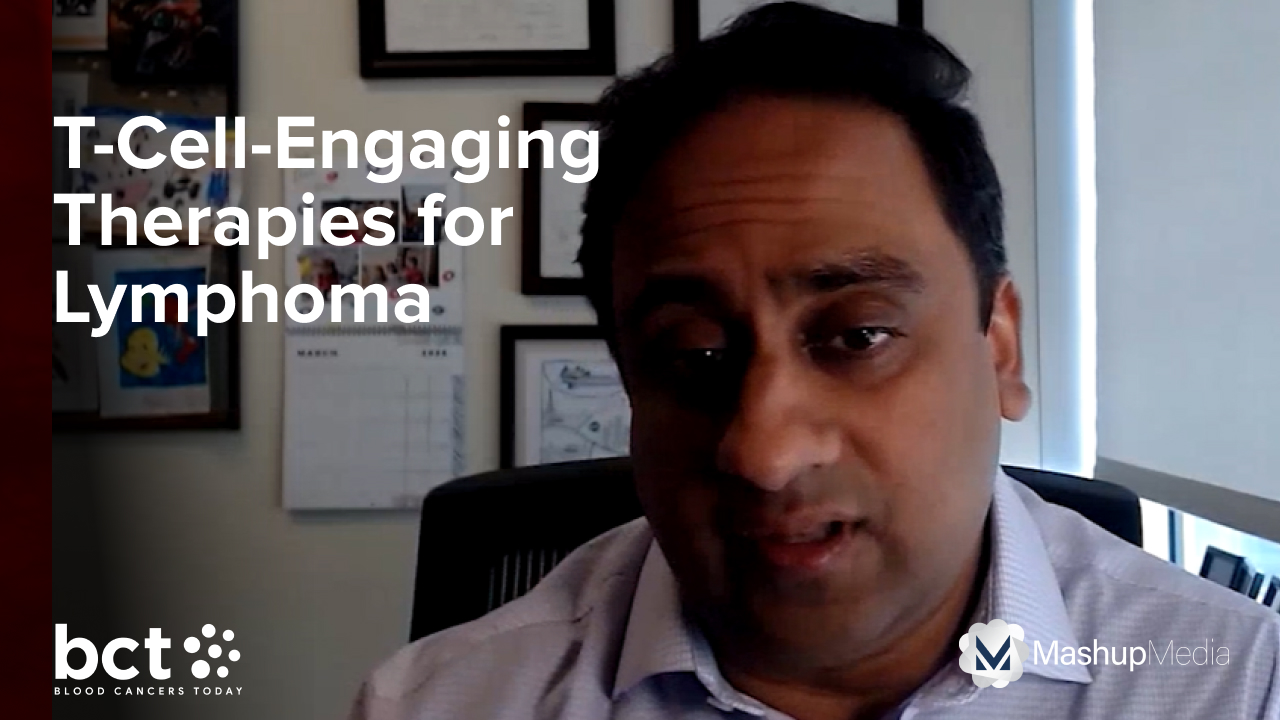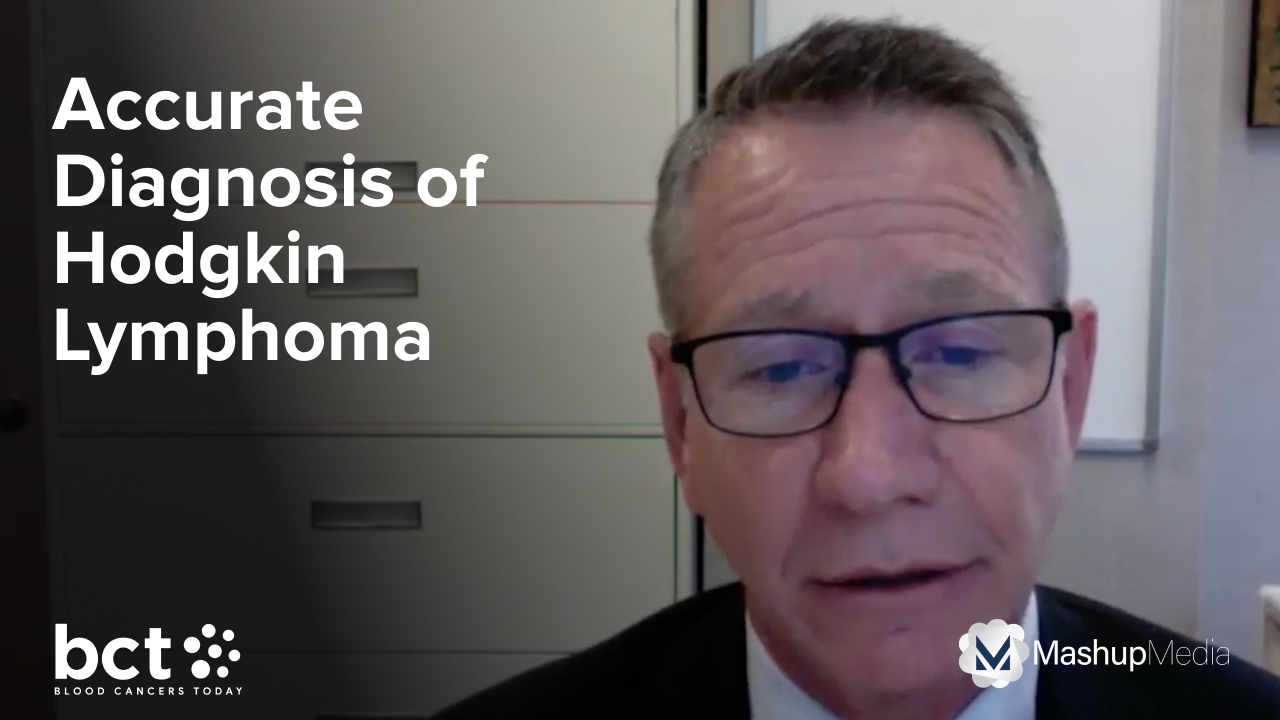
Andrew M. Evens, DO, MBA, MSc, associate director (clinical services) of Rutgers Cancer Institute of New Jersey, stopped by Blood Cancers Today to share practice-changing research in Hodgkin lymphoma and what to expect in the clinical trial space in 2025.
Dr. Evens discussed the ECHELON-1 trial of brentuximab vedotin plus standard chemotherapy, how recent data on checkpoint inhibitors established a new standard of care in advanced-stage disease, and how the collaborative AHOD2131 trial is testing the standard of care in early-stage disease.
Which recent research in Hodgkin lymphoma are you most excited about?
There have been 2 breakthroughs in Hodgkin lymphoma in the last 10 years. One is an antibody-drug conjugate such as brentuximab vedotin, which has been FDA approved for over 10 years. Like many medications in cancer, its first entry into the approval space is usually not for patients with a new diagnosis or untreated disease, but for relapsed or refractory disease.
The hope is you can then move it into the frontline setting, but the only way you are able to take an exciting new medication from the bench to the bedside and get it approved in the first place is through clinical trials. Replacing a chemotherapy drug with brentuximab vedotin in the frontline setting—using 3 standard chemotherapy drugs and 1 targeted antibody-drug conjugate versus 4 chemotherapy drugs—was a positive trial. Its initial positivity was anchored on progression-free survival.
What has been a Holy Grail and almost unachievable bar in the field of Hodgkin lymphoma is overall survival. The ECHELON-1 trial published in the New England Journal of Medicine garnered the approval of brentuximab vedotin in the frontline setting. It not only showed a progression-free survival advantage, but also an overall survival advantage. That was a landmark publication because there had never been a clinical trial, whether with or without targeted medication, that had shown an overall survival benefit versus classic ABVD [doxorubicin, bleomycin, vinblastine, and dacarbazine]. ABVD has been the chemotherapy backbone for the last 20 plus years.
For advanced-stage disease, that was a breakthrough that we saw several years ago. As you can imagine, it’s still not 100%. We have very lofty goals in treating and hopefully curing newly diagnosed Hodgkin lymphoma. Treatment with brentuximab vedotin plus AVD [doxorubicin, vinblastine, and dacarbazine] yielded a cure rate of around 80 to 85 percent. Once we realized that was becoming the standard of care about 7 years ago, we started to design a new clinical trial to test it and see if we can do better, meaning less toxicity and better efficacy.
The second breakthrough class of drugs are called checkpoint inhibitors, and these have revolutionized the field of not just Hodgkin lymphoma, but all cancers. These stimulate the patient’s own endogenous immune system, particularly the T cells. The mechanism of stimulating the patient’s immune system transcends multiple different tumor types by re-engaging, reactivating, and enhancing the immune system, and one of those tumor types is Hodgkin lymphoma. Hodgkin’s finds a way to exhaust the patient’s own immune system. These medications block that exhaustion and reactivate the immune system.
Just like brentuximab vedotin, pembrolizumab and nivolumab were approved in the relapsed or refractory setting. We are looking to bring it frontline. We recently published a North American Cooperative Group clinical trial in the New England Journal of Medicine last year of brentuximab vedotin and AVD versus nivolumab and AVD, and we saw really impressive results. At 2 years, the progression-free survival in patients who received nivolumab and AVD was over 90%, which was superior to the brentuximab vedotin and AVD regimen. It was also better tolerated, with less infections and less neuropathy. With checkpoint inhibitors, we have to be cautious of side effects such as thyroid disease, but thankfully those were not severe and fairly uncommon.
For advanced-stage disease, the cure rate is quite high. Just in the last few months, nivolumab plus AVD has broken through as the new standard of care. We’ll have to see where we go from here, but we’re having discussions about post–nivolumab plus AVD for advanced-stage disease.
What can we expect in Hodgkin lymphoma in 2025?
For early-stage disease, there is an active phase 3 study called AHOD2131 enrolling over 2,000 patients led by the Children’s Oncology Group. This has also been a transcendent moment in the field where the pediatric oncology colleagues and adult oncology colleagues in North America are working very closely together. There’s power by numbers, and if we can work together, we can finish the clinical trials faster and make more progress in an expedient time.
We’re testing the standard of care as of today, March 2025, for any patient, regardless of age, with early-stage Hodgkin lymphoma. Targeted medications for advanced-stage disease are not approved for early-stage disease, so that is our goal. The standard-of-care arm is classic chemotherapy such as ABVD. We are doing PET [positron emission tomography] scans to adjust therapy, called response-adapted therapy. If you’re having a slow response, you would escalate to a treatment called BEACOPP. That’s a more common regimen in Europe and other countries.
In the experimental arm, we’re cutting the chemotherapy down by 40 to 60 percent. Instead of giving 4 to 6 months of chemotherapy, which is the current standard of care, we’re only giving 2 months of chemotherapy, and then targeted medications to give both brentuximab vedotin and checkpoint inhibitor therapy. That study is actively enrolling throughout North America.






 © 2025 Mashup Media, LLC, a Formedics Property. All Rights Reserved.
© 2025 Mashup Media, LLC, a Formedics Property. All Rights Reserved.